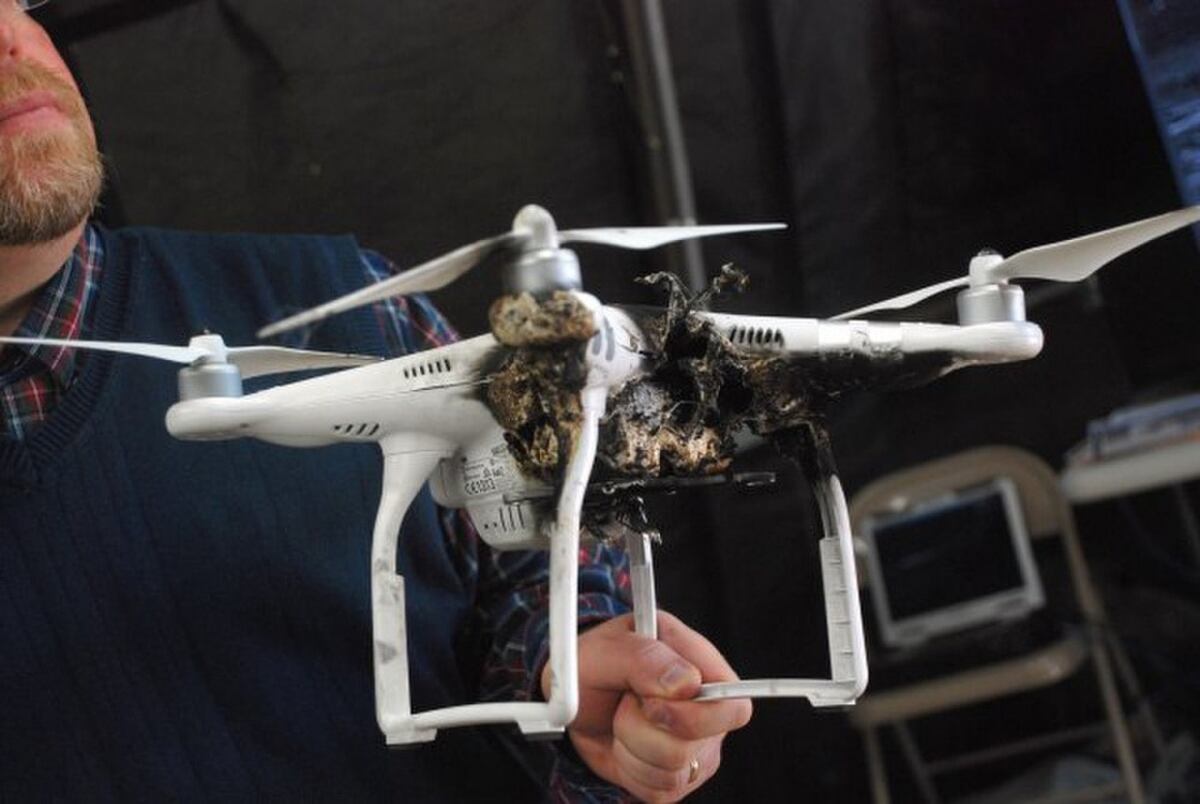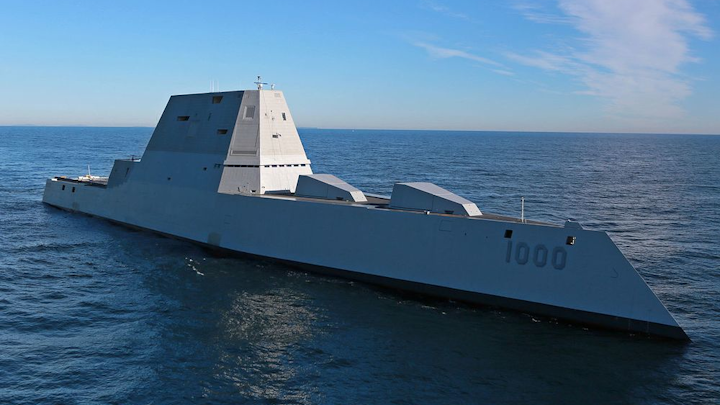MAY 1, 2019
Raytheon shoots down drone with lasers, microwaves in Air Force test
By Ed Adamczyk

Dozens of drones were successfully brought down using guided lasers and microwaves from a movable platform aboard an all-terrain vehicle in a U.S. Air Force test. Photo courtesy of US. Air Force
May 1 (UPI) -- A U.S. Air Force exercise involving high-energy microwaves and guided lasers to shoot down drones was a success, contractor Raytheon announced.
Dozens of unmanned aerial targets were defeated in the tests at White Sands Missile Range, N.M., a Raytheon statement released on Tuesday said.
The event expanded on previous directed energy demonstrations, including a U.S. Army exercise in 2017 and a previous Air Force test in January.
The high energy laser system uses invisible beams of light to shoot down aerial targets, and the high-powered microwave bursts disrupt drone guidance systems. Its primary advantages are speed and a low cost per engagement. The weapons have been mounted on all-terrain vehicles specially made by Minnesota's Polaris Industries for the military.
"After decades of research and investment, we believe these advanced directed energy applications will soon be ready for the battlefield to help protect people, assets and infrastructure," said Dr. Thomas Bussing, Raytheon Advanced Missile Systems vice president.
Raytheon and the U.S. Air Force Research Laboratory have partnered on a $2 million contract to test and demonstrate high-power microwave and counter-UAV [unmanned aerial system] technologies.
Raytheon shoots down drone with lasers, microwaves in Air Force test
Raytheon shoots down drone with lasers, microwaves in Air Force test
By Ed Adamczyk

Dozens of drones were successfully brought down using guided lasers and microwaves from a movable platform aboard an all-terrain vehicle in a U.S. Air Force test. Photo courtesy of US. Air Force
May 1 (UPI) -- A U.S. Air Force exercise involving high-energy microwaves and guided lasers to shoot down drones was a success, contractor Raytheon announced.
Dozens of unmanned aerial targets were defeated in the tests at White Sands Missile Range, N.M., a Raytheon statement released on Tuesday said.
The event expanded on previous directed energy demonstrations, including a U.S. Army exercise in 2017 and a previous Air Force test in January.
The high energy laser system uses invisible beams of light to shoot down aerial targets, and the high-powered microwave bursts disrupt drone guidance systems. Its primary advantages are speed and a low cost per engagement. The weapons have been mounted on all-terrain vehicles specially made by Minnesota's Polaris Industries for the military.
"After decades of research and investment, we believe these advanced directed energy applications will soon be ready for the battlefield to help protect people, assets and infrastructure," said Dr. Thomas Bussing, Raytheon Advanced Missile Systems vice president.
Raytheon and the U.S. Air Force Research Laboratory have partnered on a $2 million contract to test and demonstrate high-power microwave and counter-UAV [unmanned aerial system] technologies.
Raytheon shoots down drone with lasers, microwaves in Air Force test












![[IMG] [IMG]](/proxy.php?image=https%3A%2F%2Fwww.armyrecognition.com%2Fimages%2Fstories%2Fanalysis_focus%2Fmilitary_technology%2FTeam_Dynetics_to_supply_100kW_class_high_energy_laser_demonstrator_to_U.S._Army.jpg&hash=d9e142057e637e809bdc5b12c3ac17a2)






![[IMG] [IMG]](/proxy.php?image=https%3A%2F%2Fwp-assets.futurism.com%2F2019%2F05%2Fus-military-helios-laser-weapon-1200x630.png&hash=8fd0f5355c28b7e87922f9b87cfb9d12)

